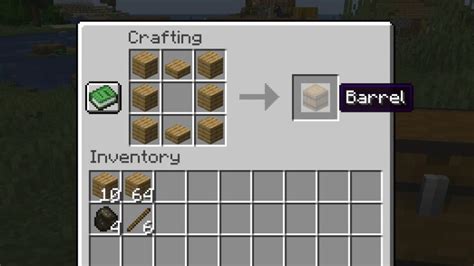The Ultimate Guide to Barrel-Aged Goodness: Recipes and Techniques
Are you ready to elevate your brewing or distilling game? Barrel aging adds a unique depth and complexity that transforms ordinary drinks into extraordinary experiences. This comprehensive guide dives into the world of barrel aging, providing you with essential recipes and techniques to create your own barrel-aged masterpieces. Whether you're a seasoned homebrewer or just starting, this guide has something for everyone.
Understanding the Barrel Aging Process
Before we jump into specific recipes, let's understand the fundamentals. Barrel aging involves storing your beverage (beer, wine, spirits) in wooden barrels for a period of time. The wood interacts with the liquid, imparting its unique flavor profile. This process is influenced by several key factors:
Key Factors Affecting Barrel Aging:
- Type of Wood: Different wood types (oak, cherry, maple) contribute vastly different flavors. Oak, for example, is a popular choice due to its versatility and ability to impart vanilla, spice, and smoky notes.
- Toast Level: The degree to which the barrel staves are toasted influences the flavor profile. Lighter toasts result in subtle flavors, while heavier toasts deliver bolder, more intense characteristics.
- Char Level: Charring the inside of the barrel adds another layer of complexity. The char level affects the extraction of flavors from the wood, leading to smoky, caramelized notes.
- Barrel Size: Barrel size impacts the surface area to volume ratio. Smaller barrels generally lead to faster aging and more intense flavor extraction.
- Aging Time: The duration of aging is crucial. Shorter aging times might result in subtle changes, while longer aging periods yield more significant flavor transformation.
Barrel Aging Recipes: A Taste of Possibilities
While precise recipes are dependent on individual preferences and the specific type of barrel used, here are some general guidelines and inspiration to get you started:
Recipe 1: Barrel-Aged Stout
Ingredients:
- 5 gallons of your favorite robust stout (recipe of your choice)
- 5-gallon used bourbon barrel (lightly charred)
Instructions:
- Ensure your stout is properly fermented and clear before transferring it to the barrel.
- Sanitize the barrel thoroughly.
- Fill the barrel completely, leaving minimal headspace.
- Seal the barrel tightly.
- Age for 6-12 months, monitoring periodically.
Expected Flavors: Expect rich, complex notes of vanilla, caramel, chocolate, and spice, integrated with the original stout profile.
Recipe 2: Barrel-Aged Whiskey (for experienced distillers only!)
Note: Distilling alcohol at home is illegal in many jurisdictions. This recipe is for informational purposes only and should only be attempted by experienced distillers in locations where it's legal.
Ingredients:
- Your distilled spirit (high proof whiskey)
- 5-gallon used bourbon barrel (heavily charred)
Instructions:
- Ensure your whiskey is of proper quality before barreling.
- Sanitize the barrel meticulously.
- Fill the barrel to the top.
- Seal the barrel tightly.
- Age for 2-5 years, monitoring regularly.
Expected Flavors: Expect bold, intense flavors of caramel, oak, vanilla, and potentially smoky notes depending on the char level and the starting whiskey.
Tips for Success
- Sanitation is paramount: Thoroughly sanitize all equipment to prevent unwanted bacteria or yeast growth.
- Monitor regularly: Check your beverage periodically to assess its progress and make adjustments if necessary.
- Patience is key: Barrel aging is a long-term process. Allow sufficient time for the wood to impart its flavor.
- Experiment: Don't be afraid to experiment with different wood types, toast levels, and aging times to find your ideal flavor profile.
This guide provides a starting point for your barrel-aging journey. Remember, each barrel is unique, and your results will vary. Enjoy the process of experimentation and the satisfaction of creating truly exceptional beverages. Happy aging!
